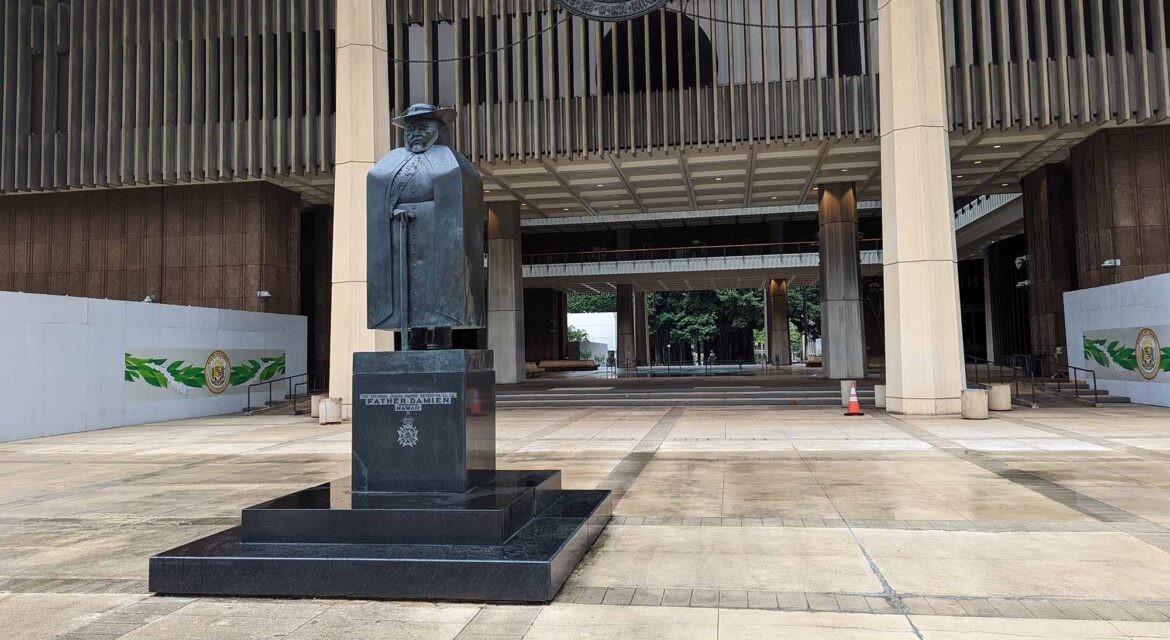 The Hawaii State Capitol is located in downtown Honolulu, where tasks and duties that govern the entire state of Hawaii are performed. This building was designed to be more than just an administrative center though, which is partially reflected in the variety of monuments located across the site. These pieces have cultivated a sense of identity that is connected to the history and legacy of the entire state.
The Hawaii State Capitol is located in downtown Honolulu, where tasks and duties that govern the entire state of Hawaii are performed. This building was designed to be more than just an administrative center though, which is partially reflected in the variety of monuments located across the site. These pieces have cultivated a sense of identity that is connected to the history and legacy of the entire state.

Cultivating Connection with the Legacy of Hawaii
 Created in 1969 and located directly across from the ʻIolani Palace, the open-air design of the Hawaii State Capitol allows the elements to freely enter, while the eight columns represent the eight main islands of Hawaii. These are just a few of the features built into the structure itself that symbolize various natural aspects of Hawaii. The monuments that it contains are more overt in their connection to the people and culture that define the Hawaiian Islands.
Created in 1969 and located directly across from the ʻIolani Palace, the open-air design of the Hawaii State Capitol allows the elements to freely enter, while the eight columns represent the eight main islands of Hawaii. These are just a few of the features built into the structure itself that symbolize various natural aspects of Hawaii. The monuments that it contains are more overt in their connection to the people and culture that define the Hawaiian Islands.
“Aquarius” by Tadashi Sato is a 36-foot circular mosaic inspired by the submerged stones viewed through the depth and reflection of blue ocean waters. The Queen Liliʻuokalani Statue in the Capitol Mall between the capitol building and ʻIolani Palace was dedicated in 1982, showing a life-sized version of the only queen regnant and the last sovereign monarch of the Hawaiian Kingdom. The Father Damien Statue is a tribute to the Roman Catholic priest who became a source of inspiration to people across Hawaii and was known as a “martyr of charity.” His statue was unveiled in 1969.
Visitors can directly engage with all of these monuments and with the space itself, allowing audiences to experience all of them on an especially personal level. Because of this, residents and visitors can get a better sense of the identity that they represent, all of which has enabled the Hawaii State Capitol to become something much more than a government administrative center.

Showcasing What It Means to Enable Connection
 Every state has capitol buildings and other important structures that are inherently tied to their communities and regions. The monuments of the Hawaii State Capitol showcase what it can mean to embrace these connections in ways that resonate with residents and visitors across the eras.
Every state has capitol buildings and other important structures that are inherently tied to their communities and regions. The monuments of the Hawaii State Capitol showcase what it can mean to embrace these connections in ways that resonate with residents and visitors across the eras.

